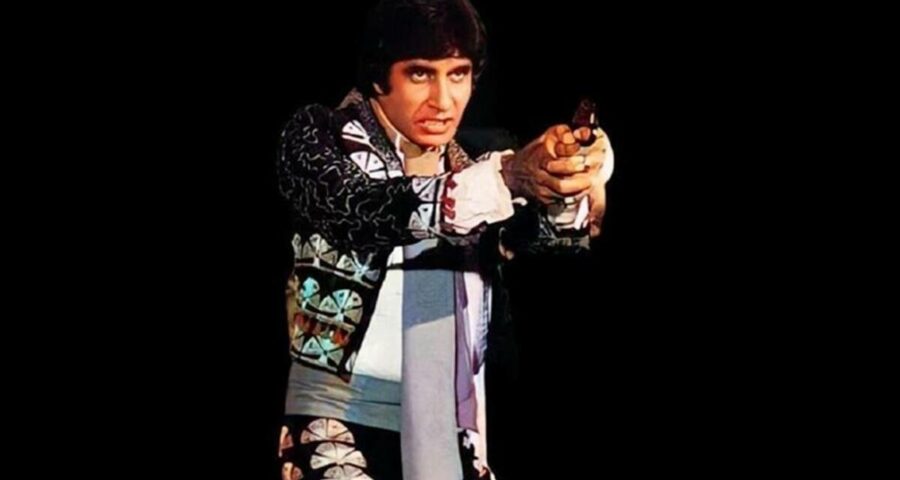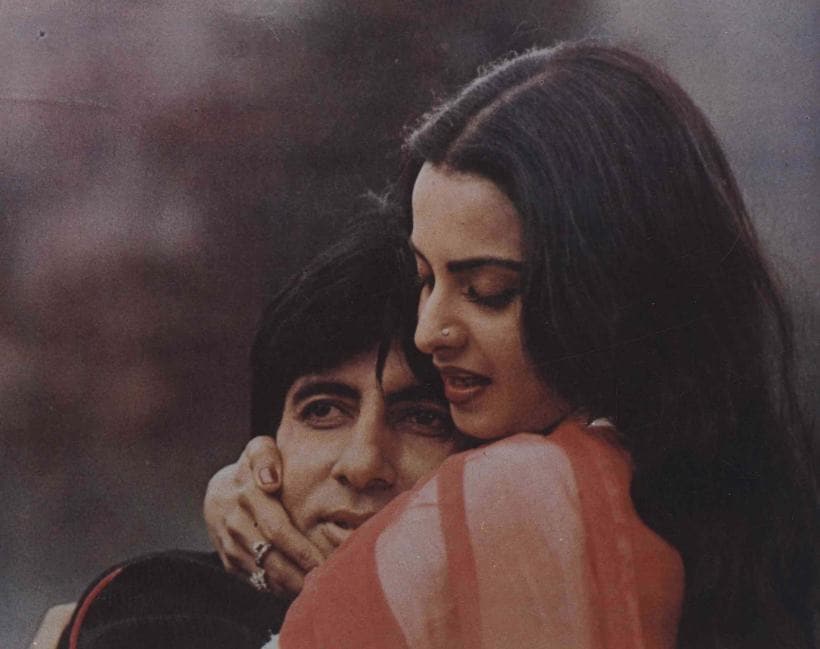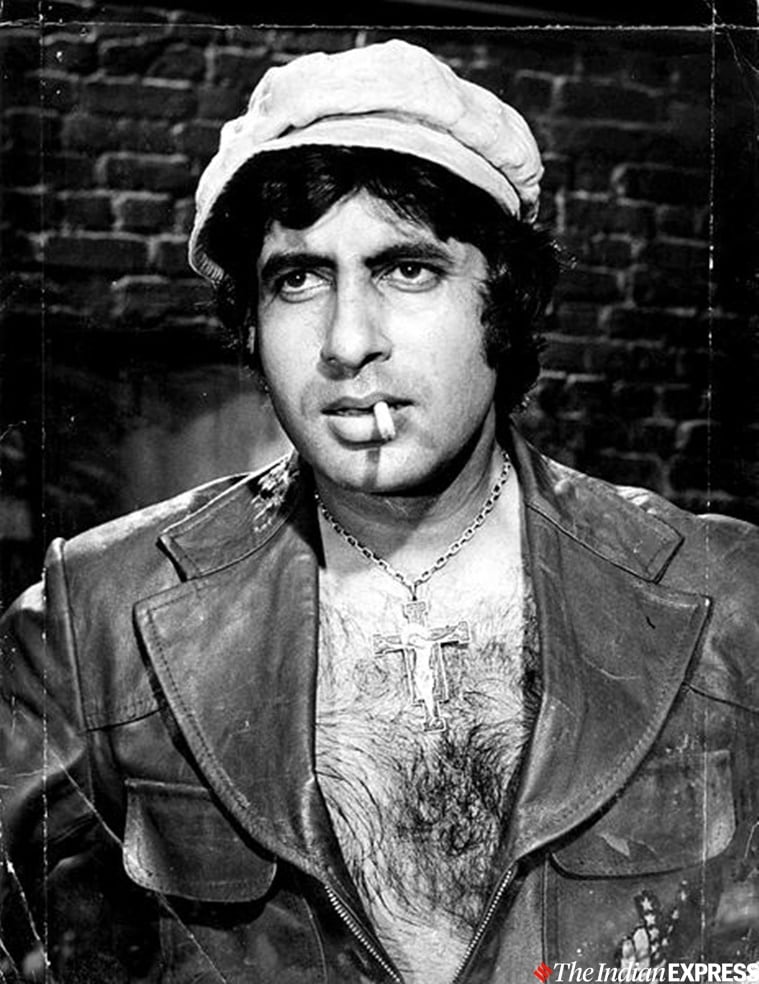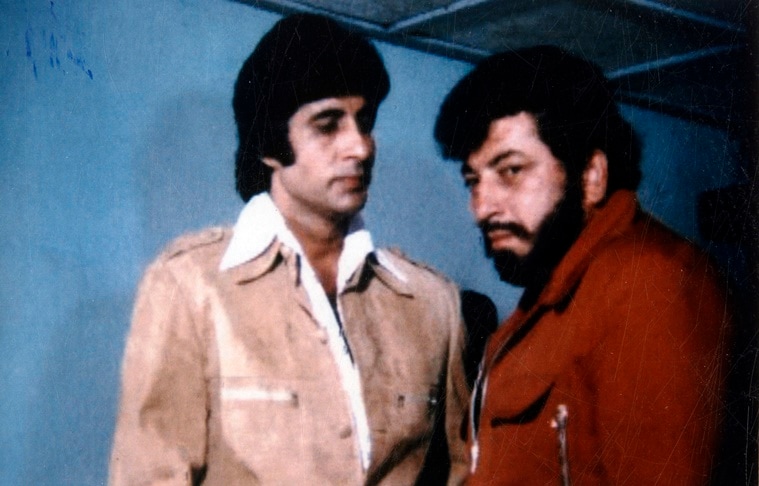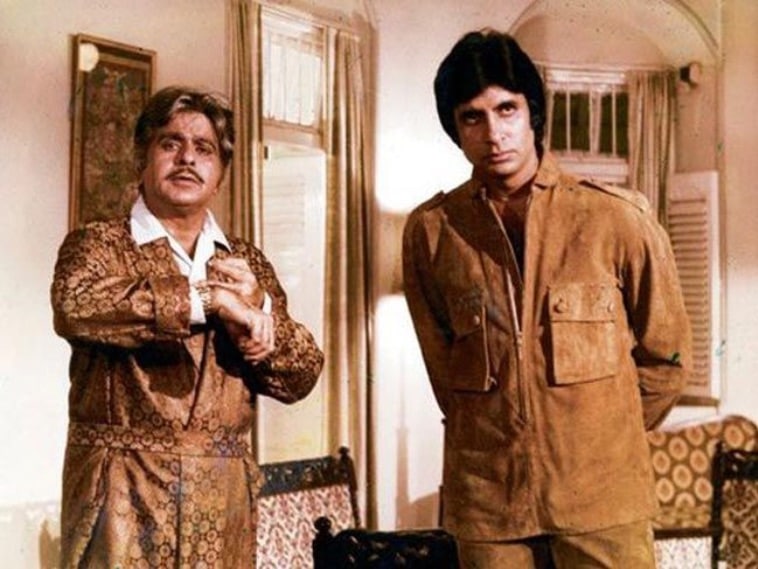The year 1981 saw six Amitabh Bachchan releases (Barsaat Ki Ek Raat, Naseeb, Silsila, Kaala, Yaarana and Laawaris). Four of these, Naseeb, Yaarana, Kaalia and Laawaris were among the year's top grossers.
The 1950s Hindi cinema is like a respectful elder. The gift, as they say, that keeps on giving. But today, we also seem to have developed a renewed appreciation for the 1970s. It was another of Bollywood’s golden age. Or, shall we say Amitabh Bachchan’s personal golden age? The era gave us Big B at his finest, angriest and even funniest, starting with Zanjeer, Abhimaan, Namak Haraam, Deewaar, Trishul, Sholay, Kabhi Kabhie, Don, Kaala Patthar, Chupke Chupke, Amar Akbar Anthony and many more. It is generally believed that it all went downhill for Bachchan after that. That’s a mistake because he was still going strong through much of the 1980s.
The year 1981, in fact, saw six Bachchan releases (Barsaat Ki Ek Raat, Naseeb, Silsila, Kaala, Yaarana and Laawaris). Make that seven. If you throw into the mix his only Punjabi appearance in Walayati Babu, that is. Four of these, Naseeb, Yaarana, Kaalia and Laawaris, were among the year’s top grossers reaffirming Bachchan’s status as a box-office king. Surprisingly, now considered a romantic classic with an unrepeatable casting that carried the whiff of real-life love scandal, Yash Chopra’s Silsila was a resounding flop.
Over time, however, critics and audiences came to realise that it might have been one of Bachchan’s beloved landmarks. In an era when the lanky superstar symbolised social anger, this was one of the very few films that saw him as a brooder, a lover with equal gift for melancholic poetry and fine sartorial sense and a sensitive man who’s more comfortable throwing punchlines than punches. Save for the scene when he whacks a ruffian who abuses Rekha as she drives out of the parking lot, included in the film only to bring out the ‘man’ in him or perhaps, to please the audience used to seeing their favourite hero as an action star. Starring Bachchan and Rekha with Sanjeev Kumar and Jaya Bachchan, Silsila is Yash Chopra’s timeless love letter to the idea of ‘love.’ The film’s motto was, ‘Love is faith and faith is forever.’
Amit (Bachchan) and Shekhar (Shashi Kapoor in a cameo) are brothers who share a thick bond. So, when Shekhar dies in a plane crash Amit, despite being in love with Chandni (Rekha), decides to assume his brother’s role — which comes with the added responsibility of marrying Shekhar’s pregnant fiancé Shobha (Jaya Bachchan). Years later, the past catches up with Amit when he runs into the much-married Chandni as he lays in a hospital bed recovering from a car accident. Turns out, her husband VK Anand (Sanjeev Kumar) is Amit’s doctor. Thus, their passion is rekindled. Their adulterous rendezvous ultimately threatens to destroy their respective marriage. The song ‘Neela Aasman’ (Lata Mangeskar’s female version) perfectly captures the three protagonists’ dilemma. A series of close-ups reveal Chandni, Shobha and Amit suffering in their own way. Longing, hurt and conflict are writ large on their faces. Former flames Chandni and Amit want to be together but Shobha has faith in her love for her husband Amit and eventually, her faith overcomes all odds.
Like Kabhi Kabhie in 1976, Yash Chopra knew Silsila was a huge gamble. The film’s biggest obstacle was its controversial casting. In real life, the Bachchans were married and the grapevine pegged Rekha as the “other woman.” How was it even possible to bring these top three stars together on the same platform? Chopra had initially approached Smita Patil and Parveen Babi. But today, we can’t imagine Silsila without its extraordinary cast and their nuanced performances in a film that’s full of emotional charge and complexities of human relationships. As far as Chopra’s ode to female beauty is concerned, Rekha remains the original Chandni, long before this most ideal of screen heroines was epitomised by Sridevi. Their chemistry in Silsila is captivating to say the least.
There’s another Bachchan here whose presence is heard, not felt. Watch the Harivansh Rai Bachchan-penned ‘Rang barse’ again (sung by his own son) and you will realise it’s more than just a Holi anthem. Read between the lines: it’s teasing Dr Anand about Amit and Chandni’s torrid affair that goes all the way to the bed. Torn between duty and love, Bachchan is the film’s dreamy-eyed poet (he’s a playwright by profession, to be accurate) who proved that he was as adept at romantic parts as he was duking it out with other dudes in the 70s’ endemic action fests.
Still the Scene-Stealer
Brooding and long-limbed like a basketball player, AB was doing a lot of the latter in Naseeb, Laawaris and Kaalia. Three of 1981’s most popular hits, this masala bonanza was typical of the period. The same year, Bachchan teamed up with all his favourite directors, Yash Chopra in Silsila, Manmohan Desai in Naseeb and Prakash Mehra in Laawaris. With them, he had struck a winning combo starting from the 1970s. The Bachchan of Naseeb, Laawaris and Kaalia is so different from the one of Silsila that you might mistake him for having a split personality. He was the fulcrum of both the middle-of-the-road and commercial Hindi cinema, doing most of the heavy lifting and proving, in the end, his own inherent versatility and talent for switching between genres — sometimes in the same film! He had been dubbed a ‘one-man industry.’
In Sidharth Bhatia’s 2013 book on Amar Akbar Anthony, his contemporary Rishi Kapoor confirmed that fact saying, “We all ran 100 metres, while he had to sprint only 75.” The duo returned as on-screen brothers in Desai’s Naseeb — call it a spiritual sequel to the cult Amar Akbar Anthony (1977). Though besides Kapoor it stars such ’70s heavyweights as Shatrughan Sinha and Hema Malini, Naseeb’s beating heart is unquestionably Bachchan. A multigenerational plot written by Kader Khan, Prayag Raj and KK Shukla, Naseeb follows John Jaani Janardhan (Bachchan). He’s born to a Christian mother, fed by a Hindu and brought up by a Muslim. This short description is enough to remind you that it’s a Manmohan Desai film. John works as a waiter in a hotel, the long-lost son of Namdev (Pran) who also served tables at an Irani cafe. Many years ago, Namdev had won a lottery but his partners (a scheming Amjad Khan and Kader Khan) cheated him out of his share and killed him. But Namdev managed to escape only to return in time to search for his family.
This is a classic Manmohan Desai lost-and-found formula. Incidentally, you could call all his films Naseeb and it would still make sense because of the magical leaps he took in his effort to entertain his working-class movie-goers. The filmmaker delighted in fiddling with his characters’ destiny only to reward them and reunite them before the curtains came down. In Desai’s never-never land (probably somewhere in Khetwadi), miracles drop from the sky, divine interventions can restore a character’s eyesight and unexpected strokes of serendipity can lead to a grand family reunion, complete with song-and-dance spectacle. Happy ending? This is endless happiness. In Naseeb, Desai’s signature touch is everywhere — Hema Malini emerging out of a flower basket, much like Bachchan snapping out of an oversized Easter egg in the AAA number ‘My Name is Anthony Gonsalves,’ his much-talked about secularism (incredulously, the climax features Pran’s Om-Allah-Christ rings saving the day), the inner Bombay patois, massy dialogue, chartbuster songs (the fun ‘Chal Chal Mere Bhai’ with Rishi Kapoor cajoling a drunk Bachchan to return home) and of course, the blockbuster climax that can make Priyadarshan envious. But the film’s most memorable sequence remains the song ‘John Jaani Janardhan’ with the legendary Raj Kapoor playing accordion in a nod to Mera Naam Joker (1970) as the who’s who of Bollywood, Waheeda Rehman, Rajesh Khanna, Dharmendra, Shammi Kapoor and many others, look on admiringly. Only a showman like Manmohan Desai could have pulled off this feat and only Bachchan, still the reigning star of the 1980s, who could have been the scene-stealer even with the biggest matinee idols vying for attention in friendly guest appearances.
Ahead of the Curve
Many Bachchan dialogues have become catchphrases over the decades. None more so than ‘Hum jahan khade ho jaate hain, line waheen se shuru hoti hai’ from Tinnu Anand’s Kaalia. True to that sentiment, here’s one star who was always ahead of the line/curve. This quotable gem has been attributed to Kader Khan but as Bachchan himself has clarified, it was written by Anand’s father, eminent screenwriter Inder Raj Anand. And in the film, it is, in fact, first uttered by Bob Christo and not by Bachchan but the superstar owned it and walked away with the credit. Kaalia is the story of its eponymous hero (Bachchan) avenging his brother’s (Kader Khan) death. The villain is the late Amjad Khan, who, in a role reversal, turns up as the hero’s friend in Yaarana and even more interestingly, as Bachchan’s father in Laawaris. Both overwhelmingly positive roles for the otherwise much-feared Gabbar Singh.
Laawaris and Yaarana are headlined by two Bachchan songs that have become an everlasting part of the pop culture phenomenon, namely ‘Mere Angne Mein’ and ‘Saara Zamaana.’ One is rockstar-level cool (his lightbulb overalls anticipating 1988’s Shahenshah outfit) while the other, an out-and-out riot with Bachchan performing in drag and waxing eloquent about the virtues of stereotypical Indian wives. He appeared in two more films in 1981. Directed by Shakti Samanta, Barsaat Ki Ek Raat features him as a cop who falls in love with a blind girl played by Rakhee and his only Punjabi foray, Walayati Babu whose grateful makers’ credit for the Bollywood superstar read: ‘Dynamic & Unforgettable Brotherly Appearance.’ Playing a tonga-wallah opposite his Naseeb co-star Reena Roy, Bachchan, whose mother was a Sikh, doesn’t have much to do here except to splice a regional film with his star appeal. Things haven’t changed that much even today, it would seem. The 78-year-old’s latest Chehre also sees him in a glorified ‘friendly appearance.’ Only time will tell if the Chehre makers’ ploy to aggrandize it as a Bachchan act will work.
Coming back to 1981. It’s not hard to see why it was a banner year for Big B. It did not cement his reputation but rather helped sustain it, his continued domination of the industry demonstrating his personal power. Undoubtedly, the 1970s was a bigger playground for him but at least the first half of the 1980s wasn’t so bad. It was only towards the end of that decade that his popularity declined — but not before delivering one of his career-best performances in 1982’s Shakti, alongside his childhood idol Dilip Kumar. Unfortunately, in 1983, he would meet with that life-threatening accident on the sets of Coolie. But one of Hindi cinema’s greatest stars survived both illnesses and professional setbacks to become a sort of a comeback specialist that makes people wonder what it’s about him that renders him so immortal and ever-relevant. In a rapidly changing world, the only constant is Amitabh Bachchan.
https://www.instagram.com/p/CNselk7BeXm/
A post shared by Amitabh Bachchan (@amitabhbachchan)
Meanwhile, critics argue that by the ’80s Hindi films had begun to slide. While that’s true it might be more useful to see the decade more as a transition phase. 1981 saw a new crop of actors coming in to challenge the Bachchan dominance. Sanjay Dutt made his debut in Rocky, Kumar Gaurav in Love Story, Kamal Haasan and Rati Agnihotri in Ek Duuje Ke Liye. Vidhu Vinod Chopra started his career that year with Sazaye Maut. Besides the commercial films, the parallel and middle cinema stream was also flowing smoothly. Chashme Buddoor, Umrao Jaan and Kalyug are just a handful of classics that make the year 1981 worth revisiting — and cherishing. As for Bachchan fans, well, you can always summon him. He’s at your service, bowing to you before declaiming in that famous baritone, “Sahib ne bulwaya hazir hoon main aaya.”
Source: Read Full Article
